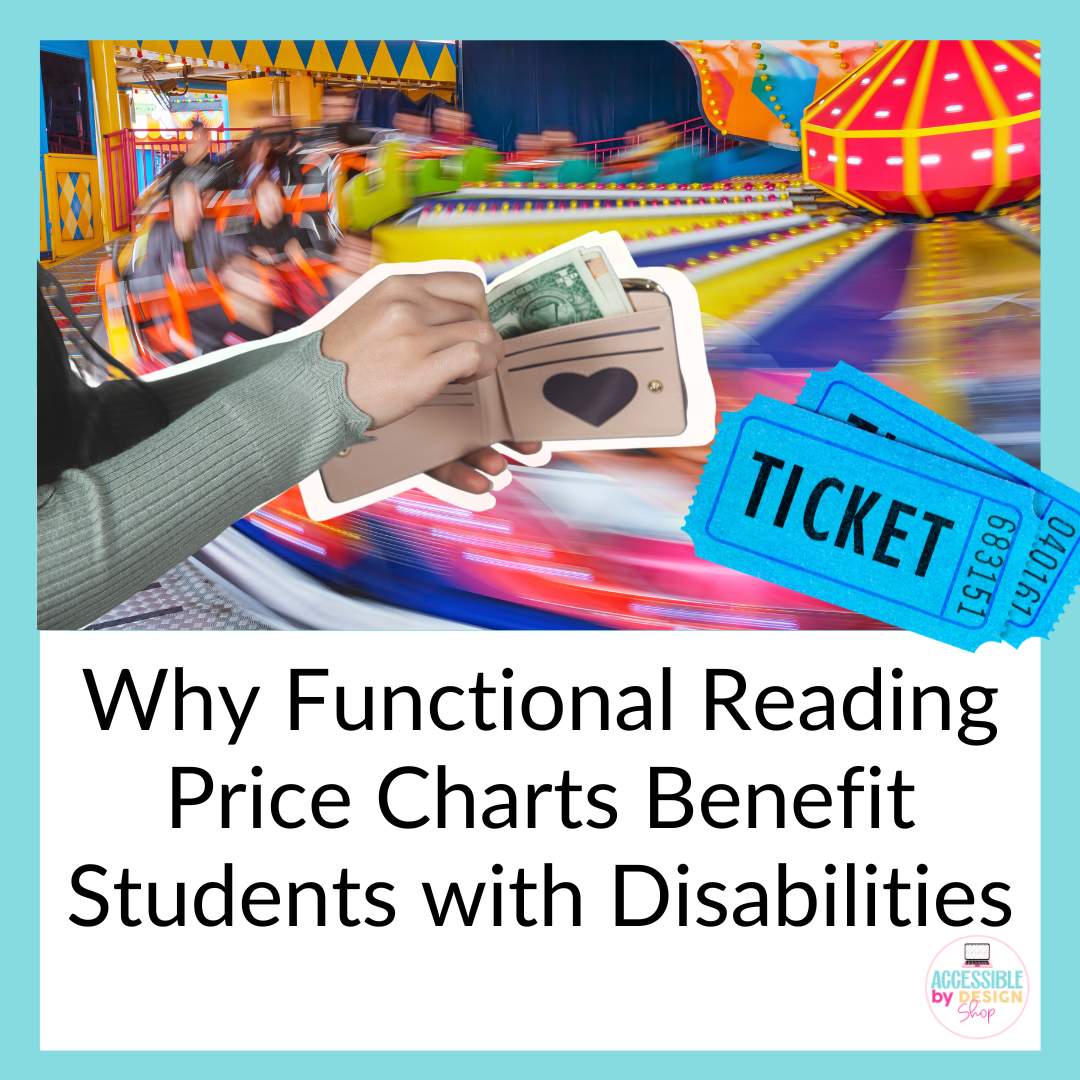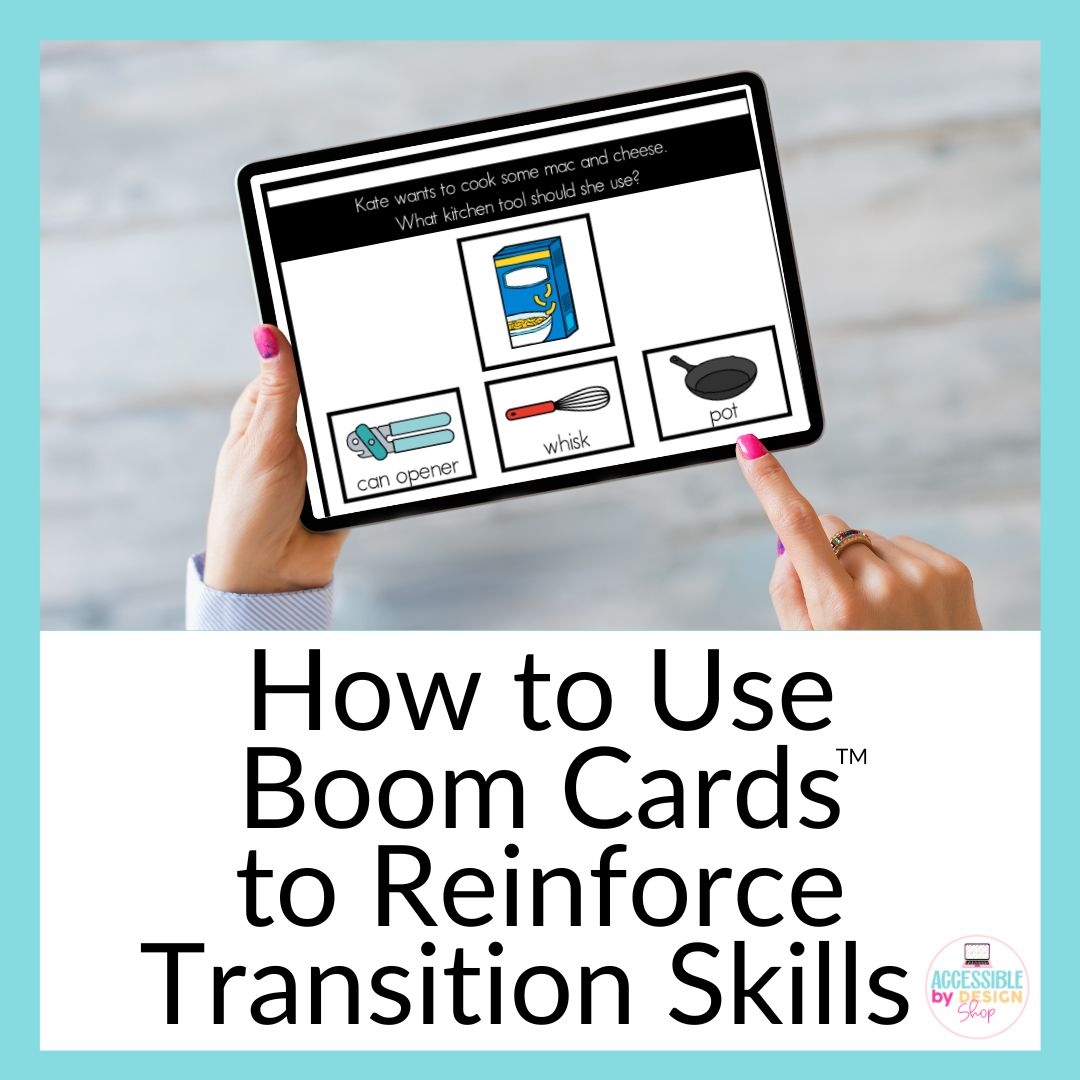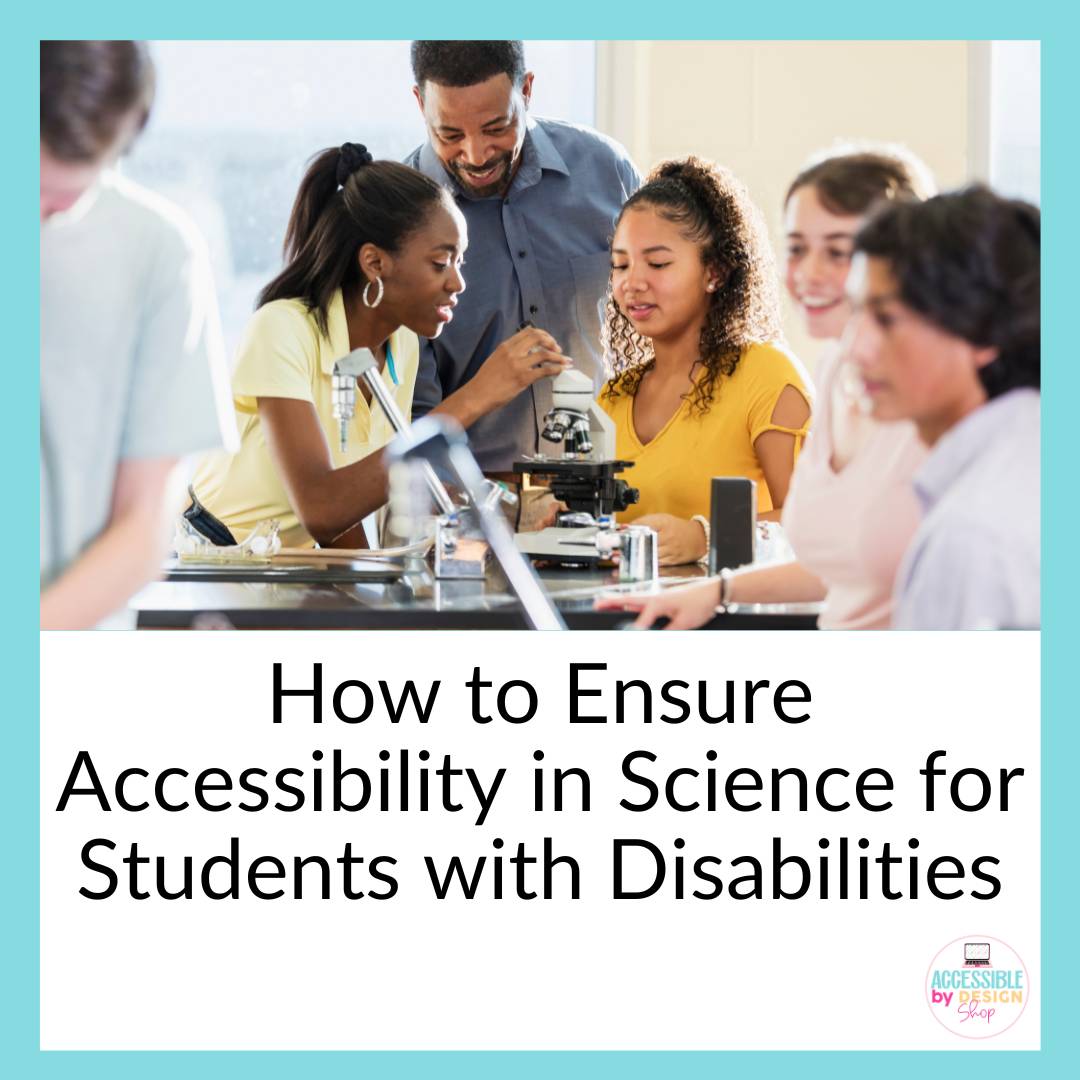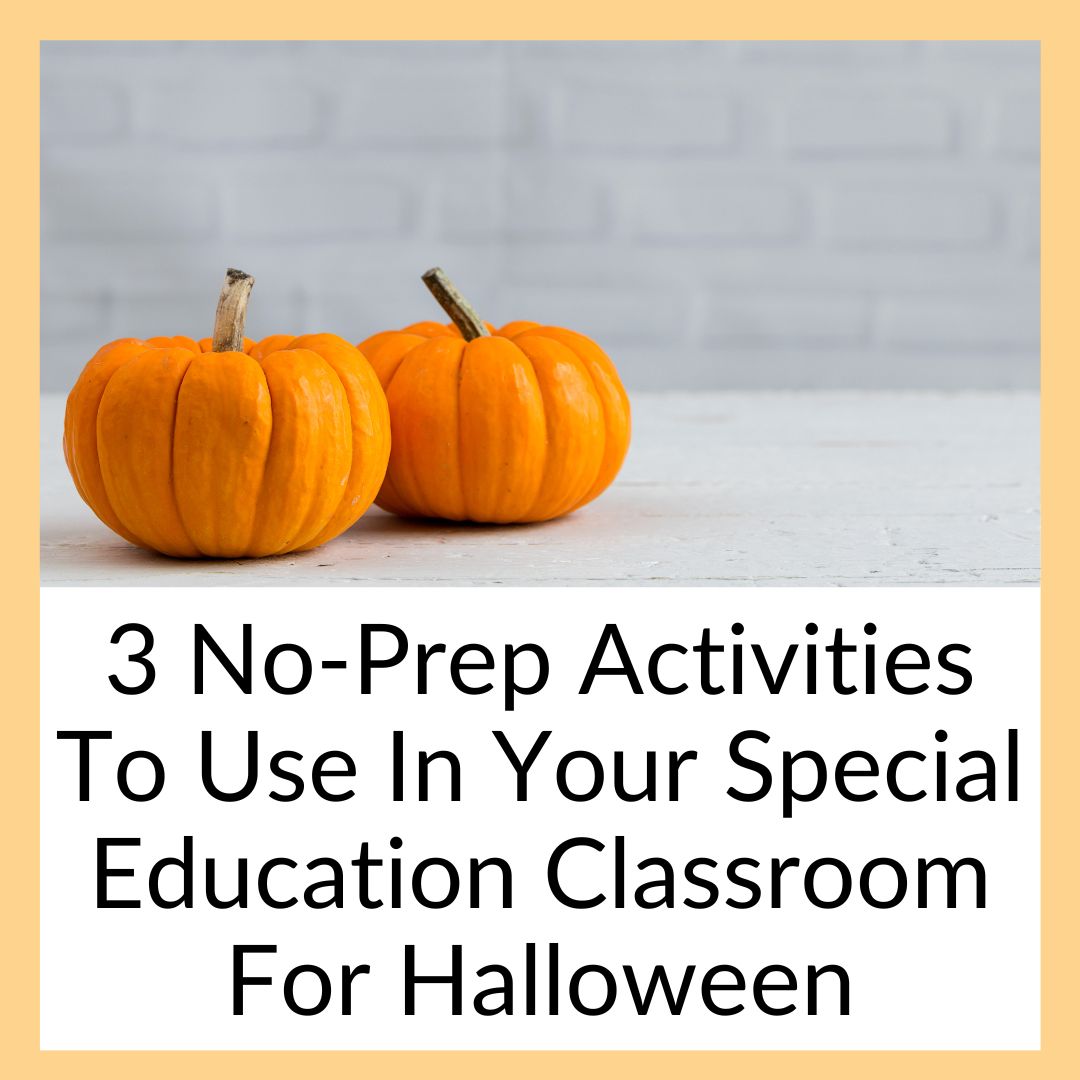Activities of Daily Living Spotlight: Dental Hygiene
Special Education teachers know the significance of teaching essential life skills or activities of daily living (ADLs).
One crucial activity of daily living is good dental hygiene since it’s tied to good overall health. Seriously! Gum disease is linked to many illnesses that are far more serious than you’d expect such as heart disease and heart attacks.
Not to be scary but making sure everyone – including students with disabilities – maintain proper dental hygiene is important. So we as special education teachers need to find practical activities and strategies to teach our students about dental hygiene.
Keep reading for tips, tricks, strategies, and ready-to-go resources to support you and your students with this activity of daily living.
Strategy 1: Create a Structured Routine
One of the main strategies to teach students about dental hygiene is to have them create a structured routine by establishing a consistent daily schedule for dental care.
The best way to do this is to break down the routine into manageable steps. Use visual schedules or task lists for guidance to do this. Provide students with a set of visuals and work to put them in the proper order for the routine. Or use this free digital reader all about practices for proper dental hygiene including healthy and unhealthy foods for teeth and how to brush teeth.
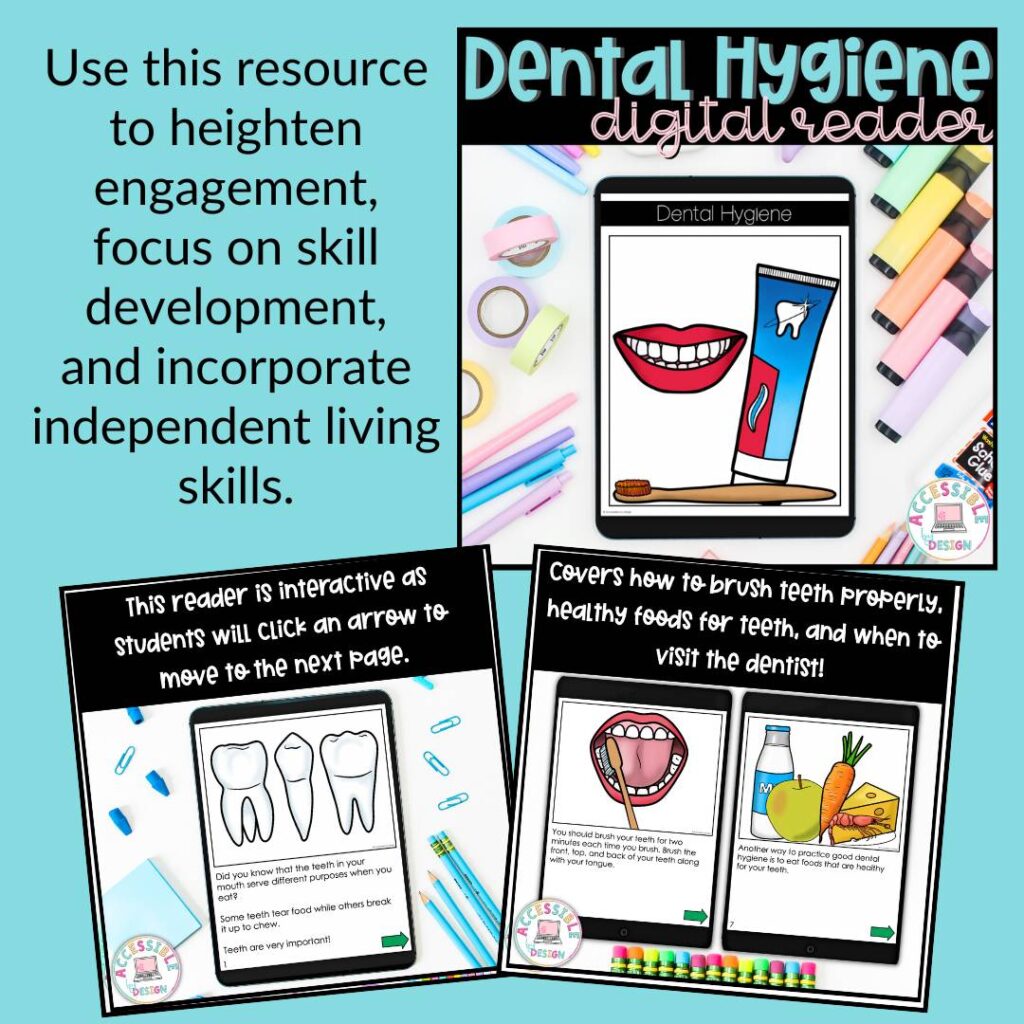
Incorporate hands-on practice and repetition by teaching students how to hold a toothbrush and apply toothpaste. This could be a station set-up in class that reappears over different periods of time. Repeating dental care activities will build muscle memory and reinforce skills too!
Strategy 2: Simplify Oral Care Techniques
Part of making dental hygiene a regular part of a student’s routine is ensuring they have the right tools and techniques.
Begin by sharing oral care aids and toothbrushes that are adapted for your student audience. This might mean toothbrushes with larger handles or modified bristles or even exploring alternative oral care tools like floss holders or swabs.
Once students have the right tools, demonstrate simplified toothbrushing techniques. Here again, visuals can make all the difference. Visuals that depict step-by-step instructions for proper brushing motions will encourage students to focus on technique – starting with front teeth and visible surfaces and then shifting to lesser-seen areas.
Strategy 3: Make Dental Hygiene Engaging and Fun
Incorporate sensory-specific opportunities for students who are able to tolerate such an approach.
Part of engagement with dental hygiene comes from the products themselves. The range of flavors of different elements such as toothpaste and mouthwash can be part of this; there’s more available than just mint! Another option is to introduce textured toothbrushes or vibrating toothbrushes for sensory stimulation.
Using social stories is ideal for illustrating the dental care routine and making use of visual supports like cue cards or picture schedules works well for reminders.
Consider how you might incorporate interactive activities to reinforce knowledge and skills. This could be dental health-themed games or making toothpaste or practicing flossing with playdough
This resource could be the start of learning and FUN for your students. In this set of 13 worksheets, students can explore new vocabulary, sort the steps in the process of brushing their teeth, read a non-fiction-themed passage, and answer comprehension questions (in differentiated ways). Plus there are fun pages added in with a word search and identification activities for foods that are healthy or unhealthy for teeth!
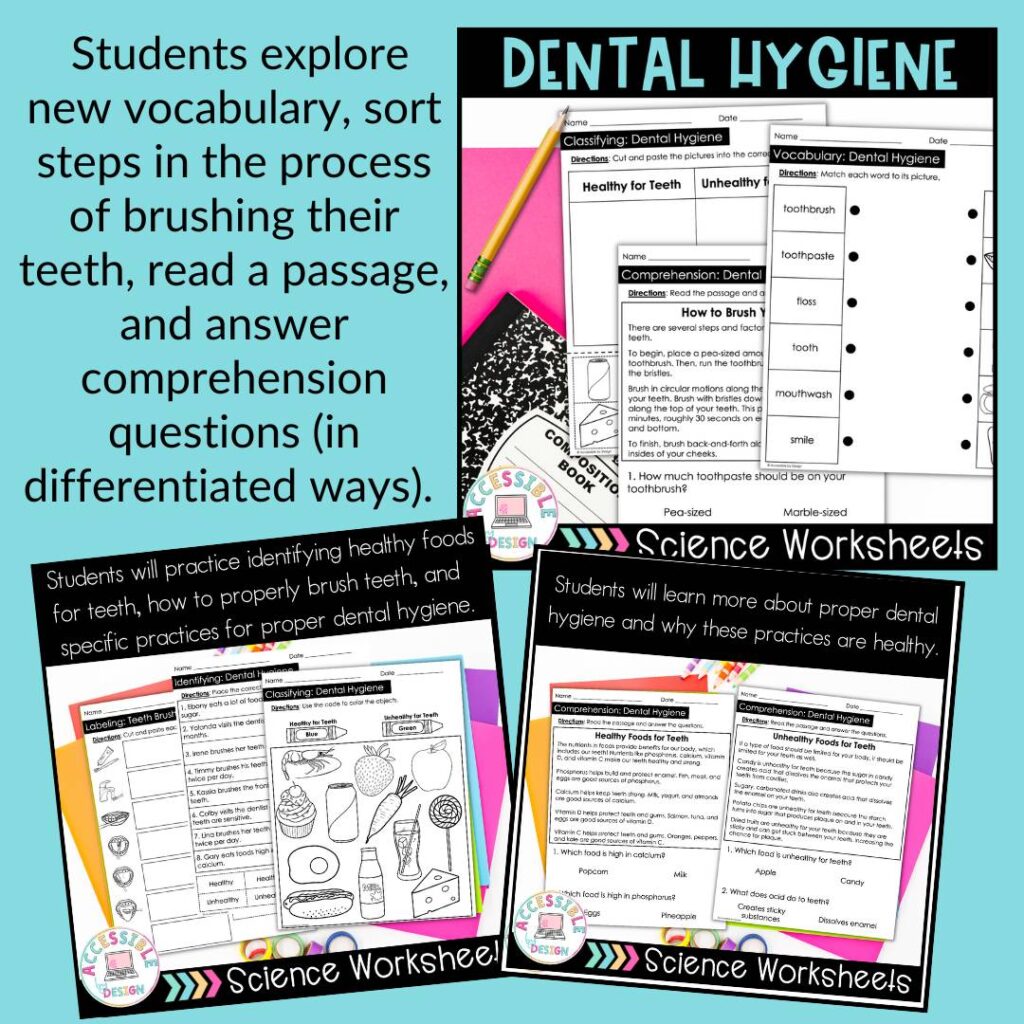
Strategy 4: Promote Independence and Self-Care Skills
Like with most lessons our goal is to promote independence – I call this teaching ourselves out of a job! Meaning we can provide early guidance but the goal is a release of responsibility that shifts from teacher to student. As a result, teaching students how to take ownership of their oral health is key.
This begins with student choice! Encourage self-expression and decision-making in oral care choices. Let students select their toothbrushes or toothpaste flavors.
The next step is to practice in and beyond the classroom with positive reinforcement. Discuss the importance of dental hygiene in different settings such as home, school, and community. Offer guidance about maintaining oral care routines outside the classroom too.
Strategy 5: Collaborate with Families and Dental Professionals
Building on the previous, consider how you can involve students’ families and caregivers in the teaching process. This includes sharing strategies and resources for reinforcing dental hygiene at home and encouraging open communication between school and home regarding oral care.
Extend the collaboration to dental professionals, particularly those in the community who may work with your current student population. Arrange guest speakers or dental health professionals to visit the classroom or seek guidance and support from dental clinics or community programs.
This will not only change the dynamic in class – who doesn’t love a guest to come in and share their experience? – but might also provide an additional level of comfort for students who may have anxiety about going to the dentist. Meeting dental professionals outside of their offices can create a different, more approachable dynamic.
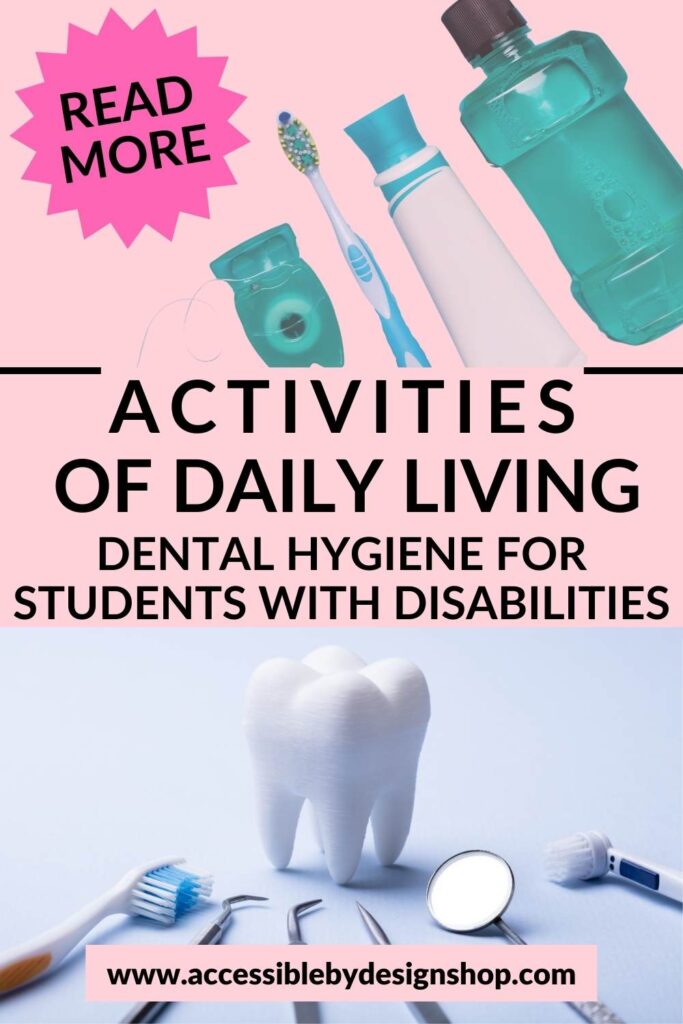
Overcoming Challenges and Celebrating Progress
With all lessons there are challenges and teaching about routines for oral hygiene is no different!
There may be sensory sensitivities or aversions related to dental care. Seeking input from occupational therapists or sensory specialists can be helpful in supporting you and your students. You might implement desensitization techniques and gradual exposure to dental tools with support.
With this in mind, any progress is good progress! Celebrate small achievements and milestones by recognizing progress in oral care skills and habits.
Final Takeaway
There are plenty of options to introduce, review, and make learning about dental hygiene fun and engaging, it’s simply a matter of considering what approach or approaches will work for the students in your classes! Start with this ready-to-go timesaving resource set and integrate some of the ideas from the post to have your students achieve success with maintaining their oral health!

